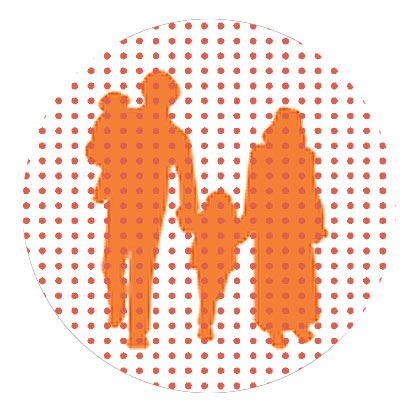One Word, Different Worlds

ADHD isn’t a one-size-fits-all diagnosis

We’ve all heard of “ADHD,” but few people, including parents, really understand the many ways this condition manifests itself. However, understanding that is essential to be able to properly treat this “popular” condition.
Although I’ve just designated ADHD as a popular disorder, the percentage of people formally diagnosed with this syndrome varies depending on who you ask. The World Health Organization cites a global prevalence of 5% for children and 2.5% for adults. The United States records 11.5% for kids (14.5% of boys and 8% of girls) and widely varying numbers for adults (4.4%, 5% or 10.2% depending on the source).
I refer to this syndrome as “popular” because so many of us believe that we or our kids have undiagnosed ADHD. This is because many of us have symptoms but don’t go to the trouble of getting a diagnosis; many others have a mild form that doesn’t significantly interfere with our functioning; and quite a number of us and our kids have a few symptoms, but less than the full number required to confirm a formal diagnosis.
Now here’s the question: What do we mean when we say that someone has ADHD? The actual diagnosis includes a bunch of symptoms that indicate difficulty focusing one’s attention on boring tasks (tasks that don’t generate enough chemical excitement in the brain, essentially anything that doesn’t appeal to the individual). These are the “attention deficit” characteristics.
There are also symptoms that indicate excessive impulsivity and hyperactivity. These are the “hyperactive” characteristics. A person can have one or both categories of symptoms.
However, there is a very important fact that makes all the difference on the impact that an ADHD diagnosis can have on a person’s life: Almost all people with ADHD also have one or more concurrent, comorbid, or as I prefer to call them, “cousin,” diagnoses. This is true of 80% of adults and, depending on who you ask, 60-90% of children.
Let’s break down what this means.
The Cousin Conditions
Psychiatric diagnoses often existing along with ADHD include one or more conditions such as depression, anxiety, bipolar disorder, personality disorders, explosive disorder, learning disabilities, autism spectrum disorders, tic disorders, addictive disorders and others.
A person who is easily distracted and a bit hyper who doesn’t meet all the criteria for ADHD and who doesn’t have any of the cousin conditions is probably doing well socially, academically, professionally, and in every other way. This child, teen, or adult is successfully making some accommodations to his or her challenges and with these work-arounds is living a full life.
If a child has a diagnosis of ADHD and a bit of anxiety, he may be a little harder to raise than his siblings but he will still respond well to normal parenting interventions. However, his sibling with full ADHD and three or more cousin conditions may present very differently and require a very different kind of parental support.
In Real Life
Levy, 22, has ADHD with low motivation arising out of his academic frustration and chronic low mood (persistent depressive disorder). He has left full-time learning and now lives at home, staying up late at night, sleeping in till noon and wasting most days. His parents appropriately tell him that he must function normally (in learning, studying and/or working) or they will no longer provide room and board — as an adult, he can move elsewhere. This threat lights a fire under Levy and he gets his act together. It’s not easy for him, but he is now able to live a more normal life.
Daniel, 31, has ADHD with a number of serious comorbidities. He’s had problems functioning since kindergarten. He has no friends and few skills. He can’t support himself financially and threatens his parents that if they don’t provide for him (pay his rent, food, car expenses, etc.) he will end up homeless. People have told the parents that they must not give in to these threats as they would be enabling his dysfunctional behavior.
The problem with this inappropriate advice is that Daniel is, in fact, seriously ill. The parents would have responsibly provided for the sustenance of a seriously physically ill adult child. They need to understand that their son also has a serious, albeit invisible, illness, one that truly renders self-sufficiency impossible. They need to support him not because of his threat, but because he is truly unwell.
ADHD isn’t a one-size-fits-all diagnosis. Its manifestation varies widely, with equally wide ramifications for parents and sufferers.
(Originally featured in Family First, Issue 932)
Oops! We could not locate your form.

